Abstract
Hall, Herbert E. (Robert A. Taft Sanitary Engineering Center, Cincinnati, Ohio), Robert Angelotti, Keith H. Lewis, and Milton J. Foter. Characteristics of Clostridium perfringens strains associated with food and food-borne disease. J. Bacteriol. 85:1094–1103. 1963.—A total of 83 strains of Clostridium perfringens—30 from England, Europe, and Asia, associated with food-poisoning outbreaks; 28 from the United States, associated with outbreaks or contaminated foods; and 25 from natural or pathological sources—have been studied to determine their serological relationships, sporulation and heat-resistance of spores, and their hemolytic activity on mammalian bloods. A comparison of the results obtained with these three groups of strains reveals that the Eurasian group is characterized by serological typability, poor sporulation with the production of heat-resistant spores, and a hemolytic activity limited to the production of partial hemolysis on horse, ox, and sheep bloods, whereas the strains from natural and pathological sources in this country are not serologically typable, sporulate well but the spores are not heat-resistant, and are hemolytically active, producing both partial and complete hemolysis on horse, ox, and sheep bloods. The American food-poisoning strains have a wide variety of characteristics. Some strains resemble the Eurasian in their serological typability and the production of heat-resistant spores, but sporulation and hemolytic activity are more like the strains from classical sources. On the basis of these data, it appears unlikely that C. perfringens food-poisoning outbreaks in the United States are restricted to strains meeting the criteria of classification described by British workers and that the isolation of large numbers of any strain of this organism from an incriminated food must be considered as having a possible bearing on the etiology of the outbreak.
Full text
PDF
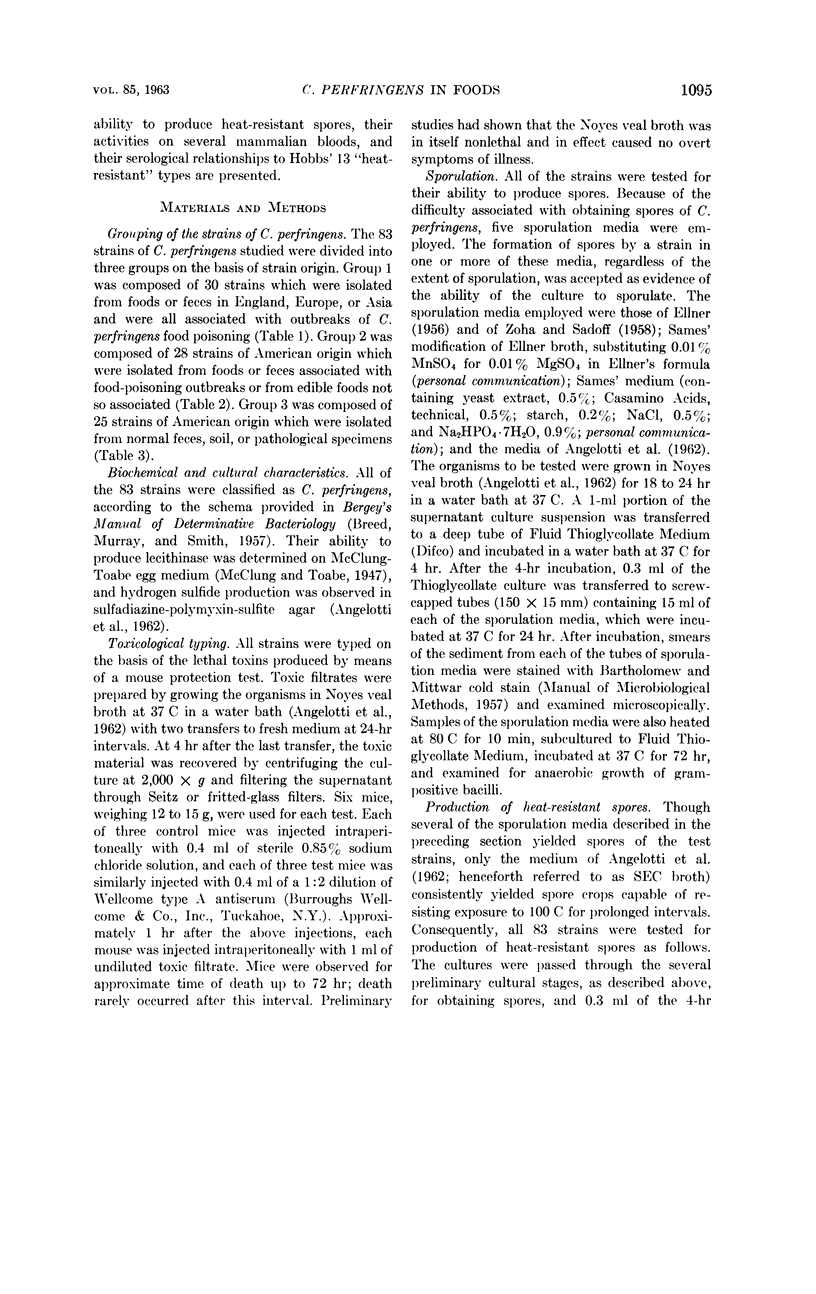

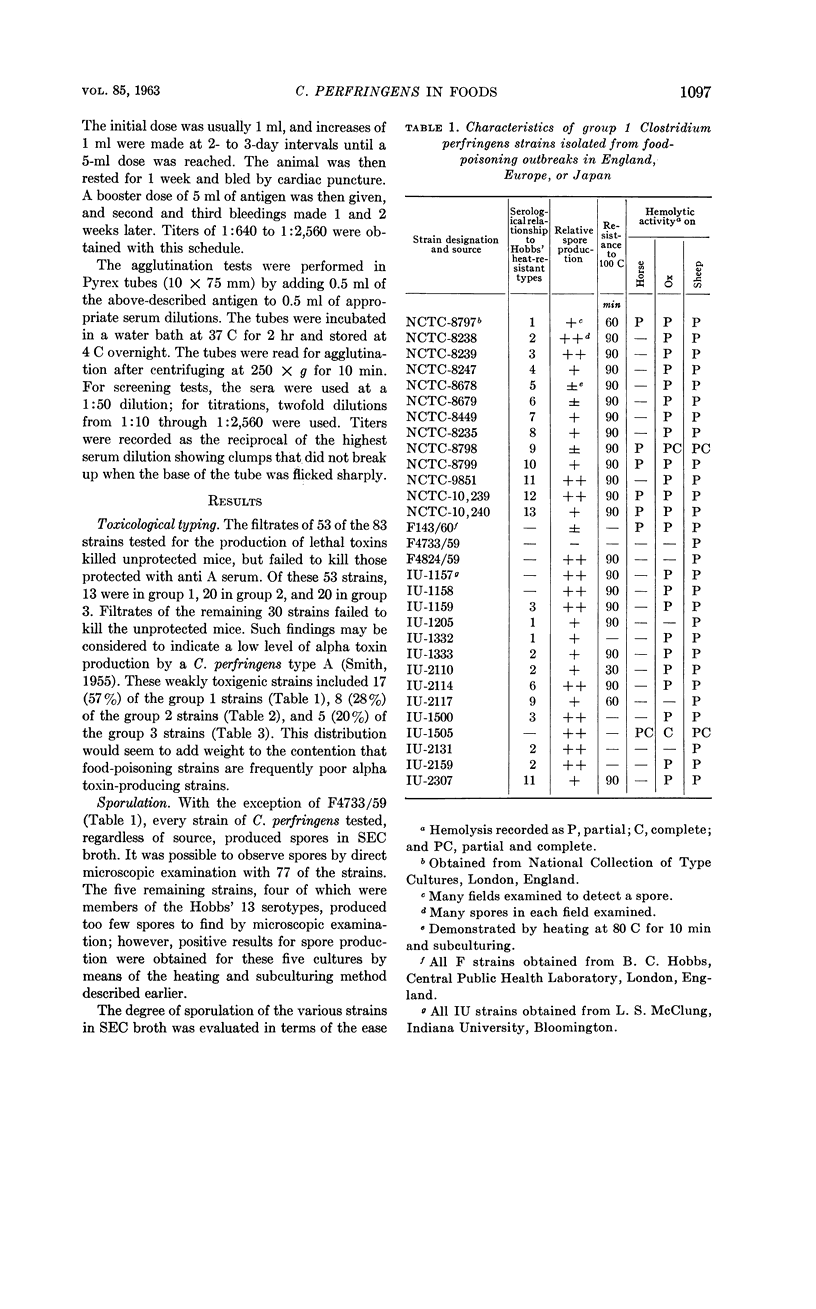
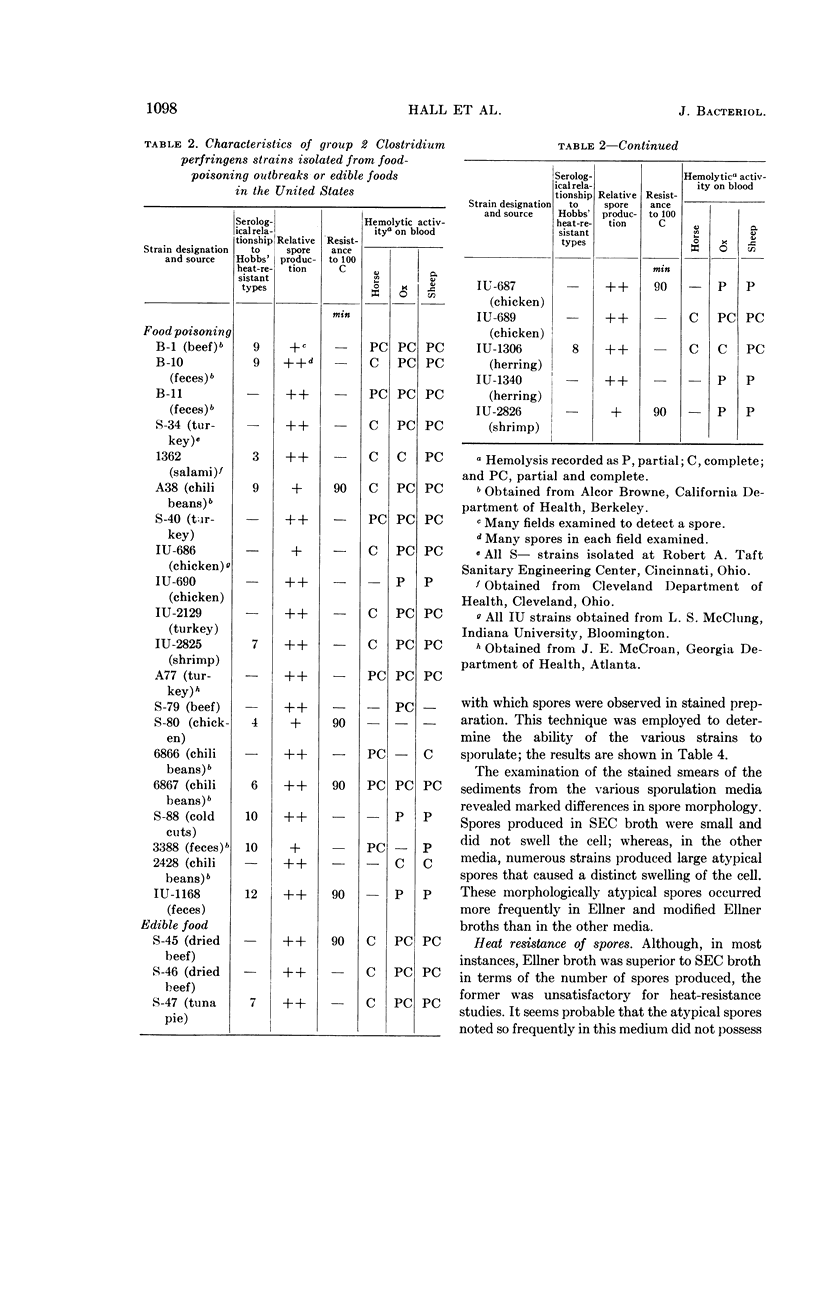
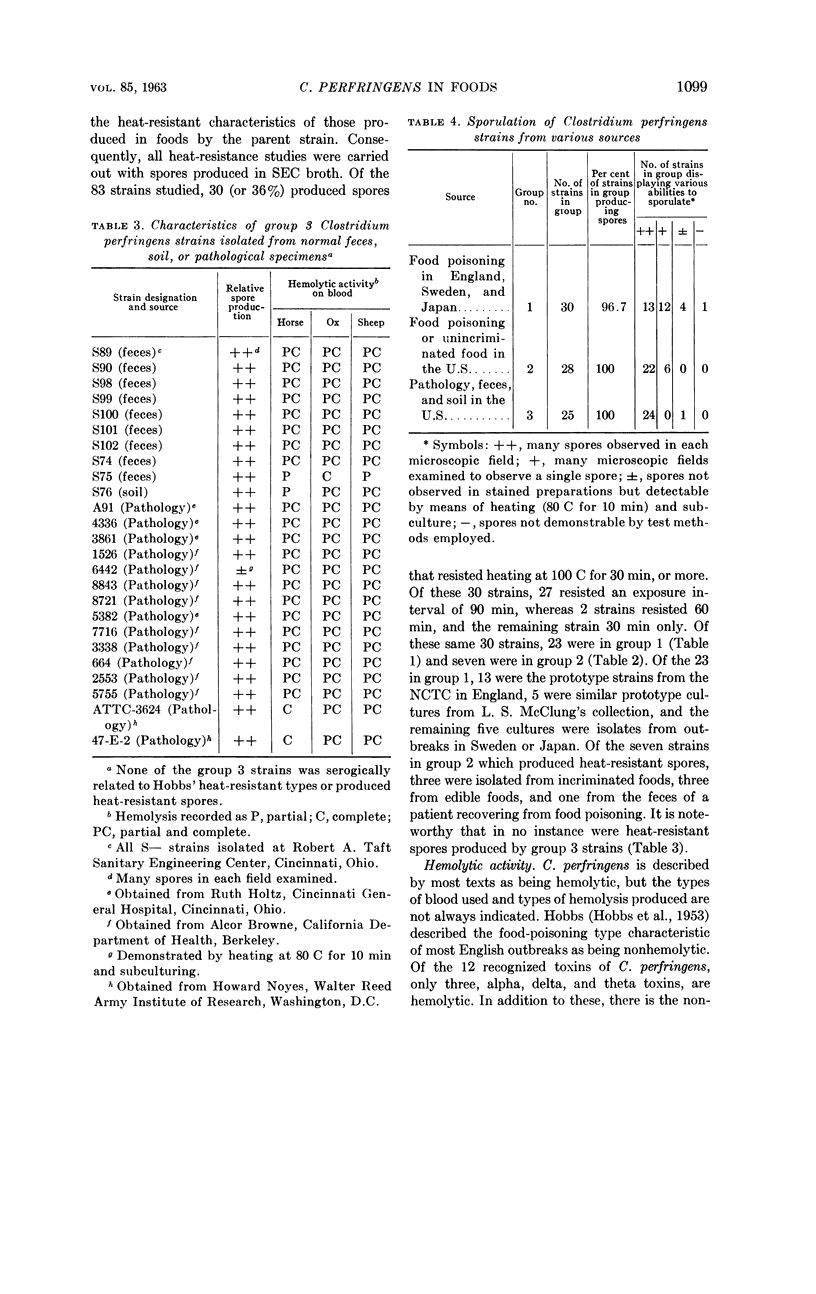
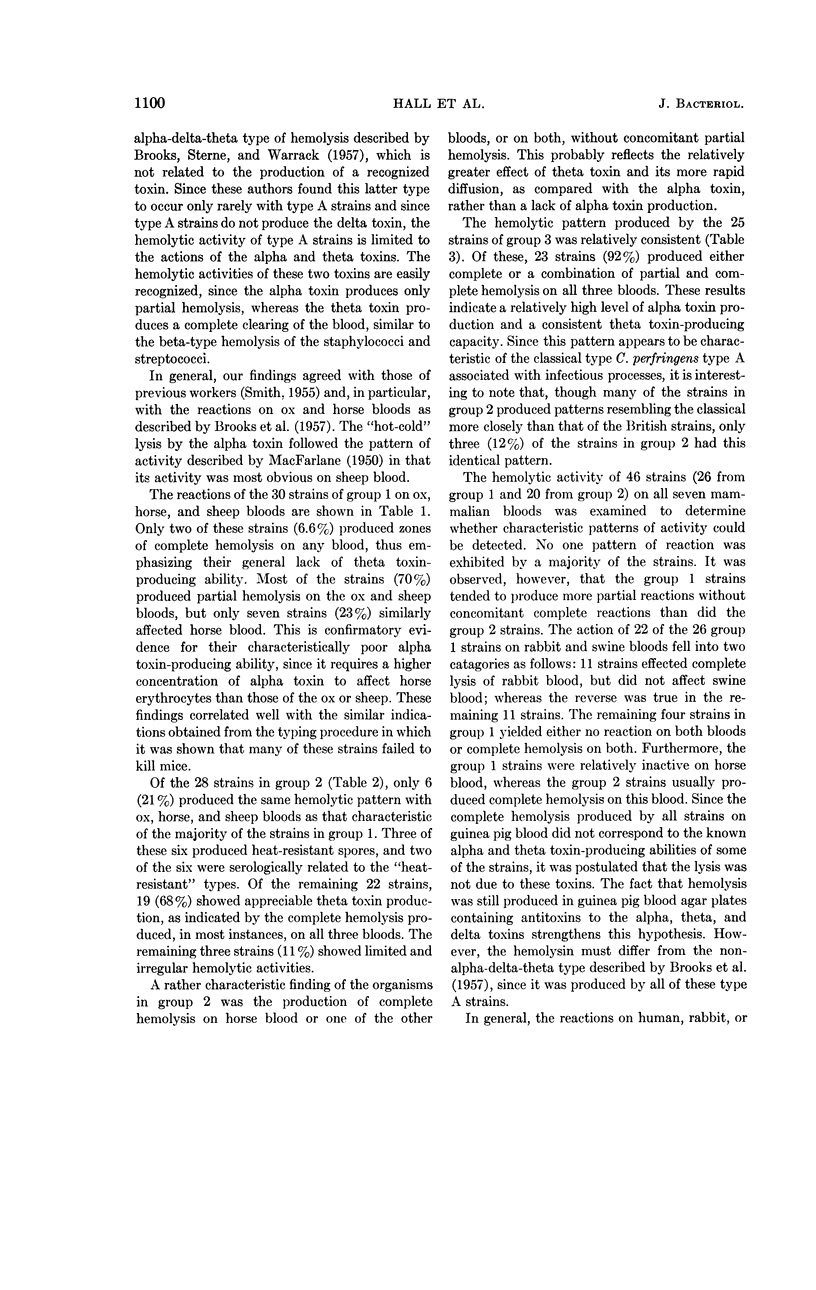
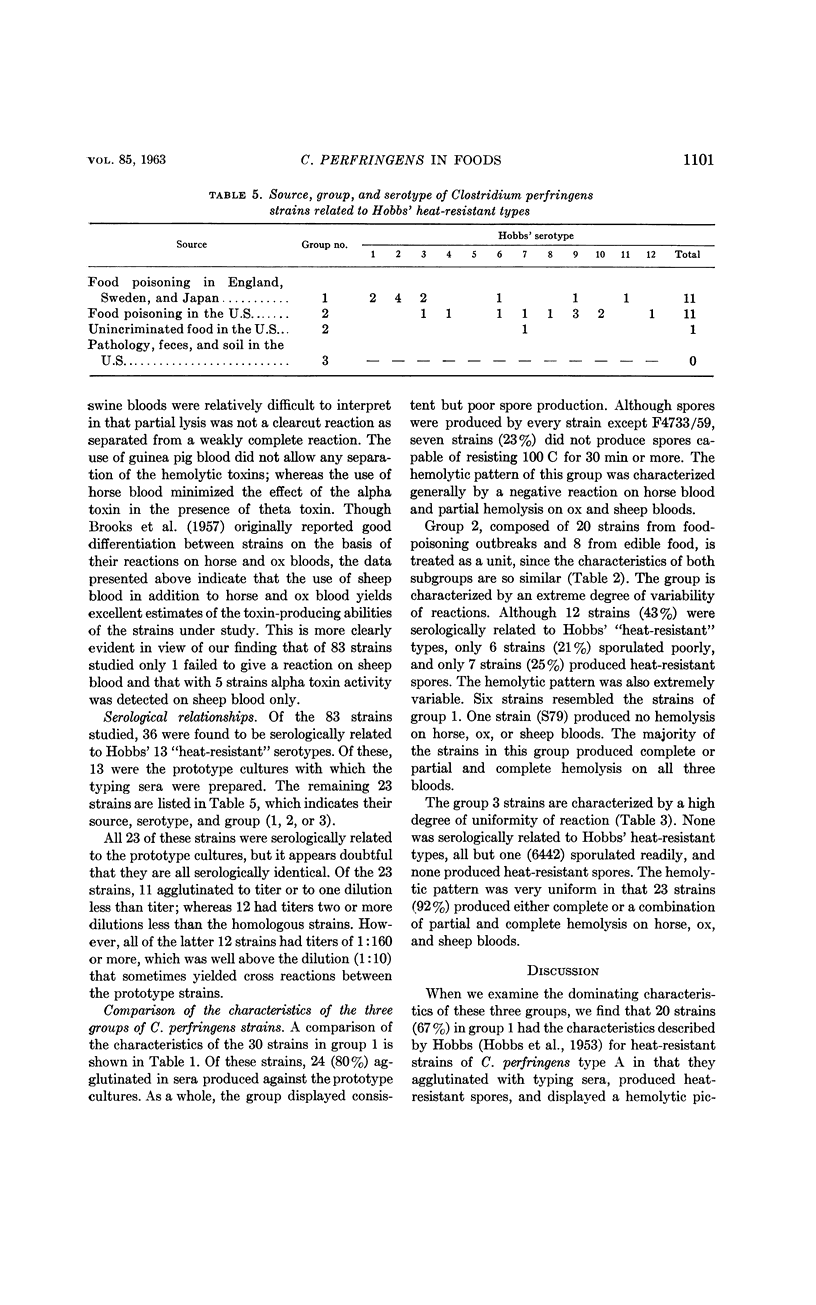
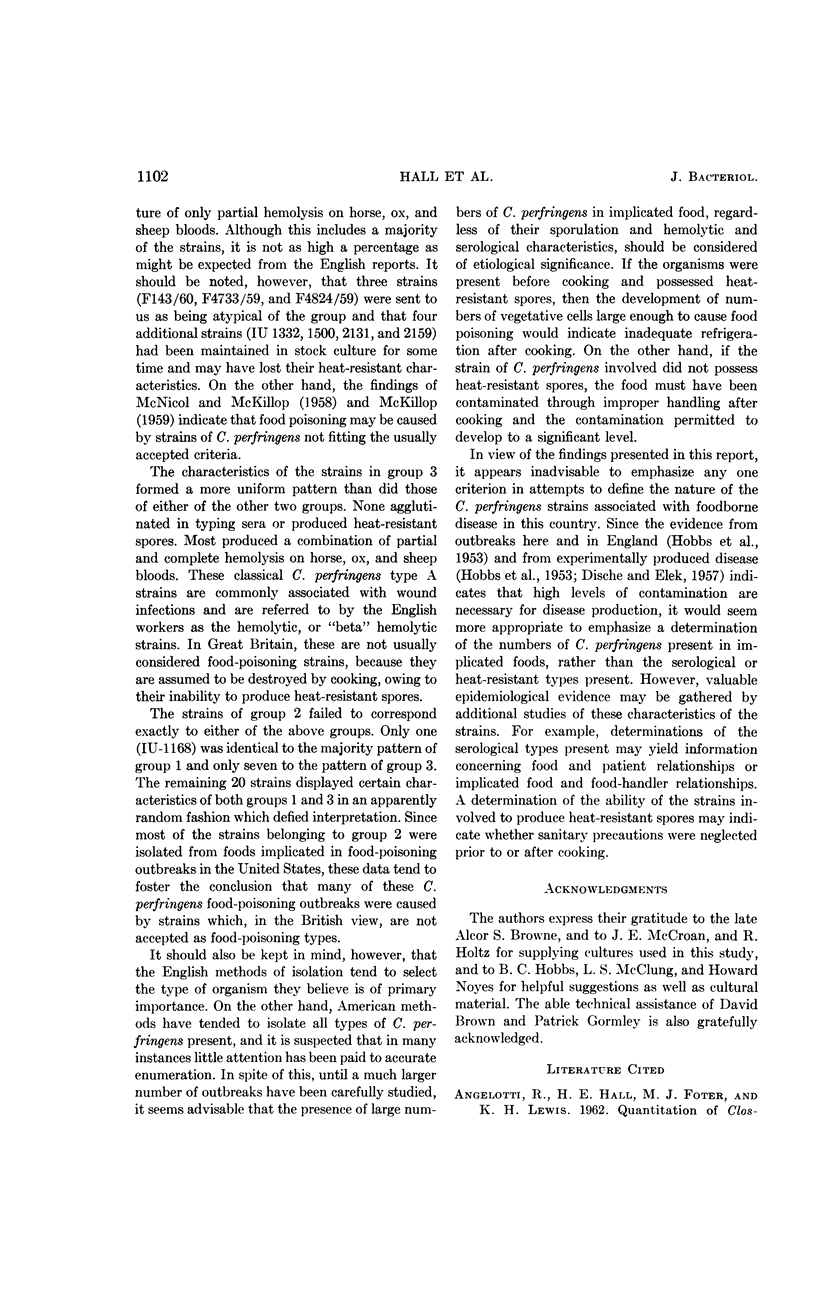
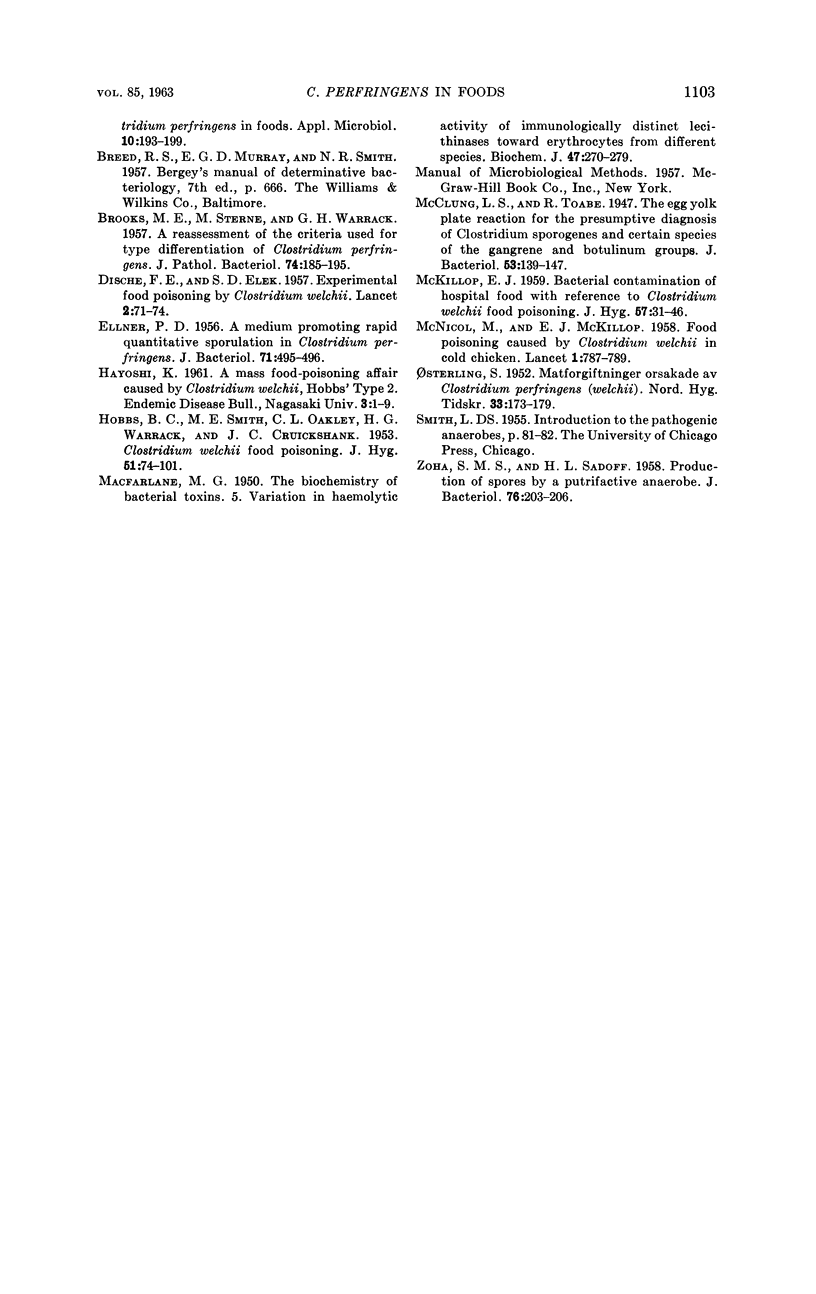
Selected References
These references are in PubMed. This may not be the complete list of references from this article.
- ANGELOTTI R., HALL H. E., FOTER M. J., LEWIS K. H. Quantitation of Clostridium perfringens in foods. Appl Microbiol. 1962 May;10:193–199. doi: 10.1128/am.10.3.193-199.1962. [DOI] [PMC free article] [PubMed] [Google Scholar]
- DISCHE F. E., ELEK S. D. Experimental food-poisoning by Clostridium welchii. Lancet. 1957 Jul 13;273(6985):71–74. doi: 10.1016/s0140-6736(57)92545-x. [DOI] [PubMed] [Google Scholar]
- ELLNER P. D. A medium promoting rapid quantitative sporulation in Clostridium perfringens. J Bacteriol. 1956 Apr;71(4):495–496. doi: 10.1128/jb.71.4.495-496.1956. [DOI] [PMC free article] [PubMed] [Google Scholar]
- HOBBS B. C., SMITH M. E., OAKLEY C. L., WARRACK G. H., CRUICKSHANK J. C. Clostridium welchii food poisoning. J Hyg (Lond) 1953 Mar;51(1):75–101. doi: 10.1017/s0022172400015515. [DOI] [PMC free article] [PubMed] [Google Scholar]
- MACFARLANE M. G. The biochemistry of bacterial toxins; variation in haemolytic activity of immunologically distinct lecithinases towards erythrocytes from different species. Biochem J. 1950 Sep;47(3):270–279. doi: 10.1042/bj0470270. [DOI] [PMC free article] [PubMed] [Google Scholar]
- McClung L. S., Toabe R. The Egg Yolk Plate Reaction for the Presumptive Diagnosis of Clostridium sporogenes and Certain Species of the Gangrene and Botulinum Groups. J Bacteriol. 1947 Feb;53(2):139–147. doi: 10.1128/jb.53.2.139-147.1947. [DOI] [PMC free article] [PubMed] [Google Scholar]
- McKILLOP E. J. Bacterial contamination of hospital food with special reference to Clostridium welchii food poisoning. J Hyg (Lond) 1959 Mar;57(1):31–46. doi: 10.1017/s0022172400019872. [DOI] [PMC free article] [PubMed] [Google Scholar]
- McNICOL M., McKILLOP E. J. Foodpoisoning caused by Clostridium welchii in cold chicken. Lancet. 1958 Apr 12;1(7024):787–789. doi: 10.1016/s0140-6736(58)91595-2. [DOI] [PubMed] [Google Scholar]
- ZOHA S. M., SADOFF H. L. Production of spores by a putrefactive anaerobe. J Bacteriol. 1958 Aug;76(2):203–206. doi: 10.1128/jb.76.2.203-206.1958. [DOI] [PMC free article] [PubMed] [Google Scholar]


